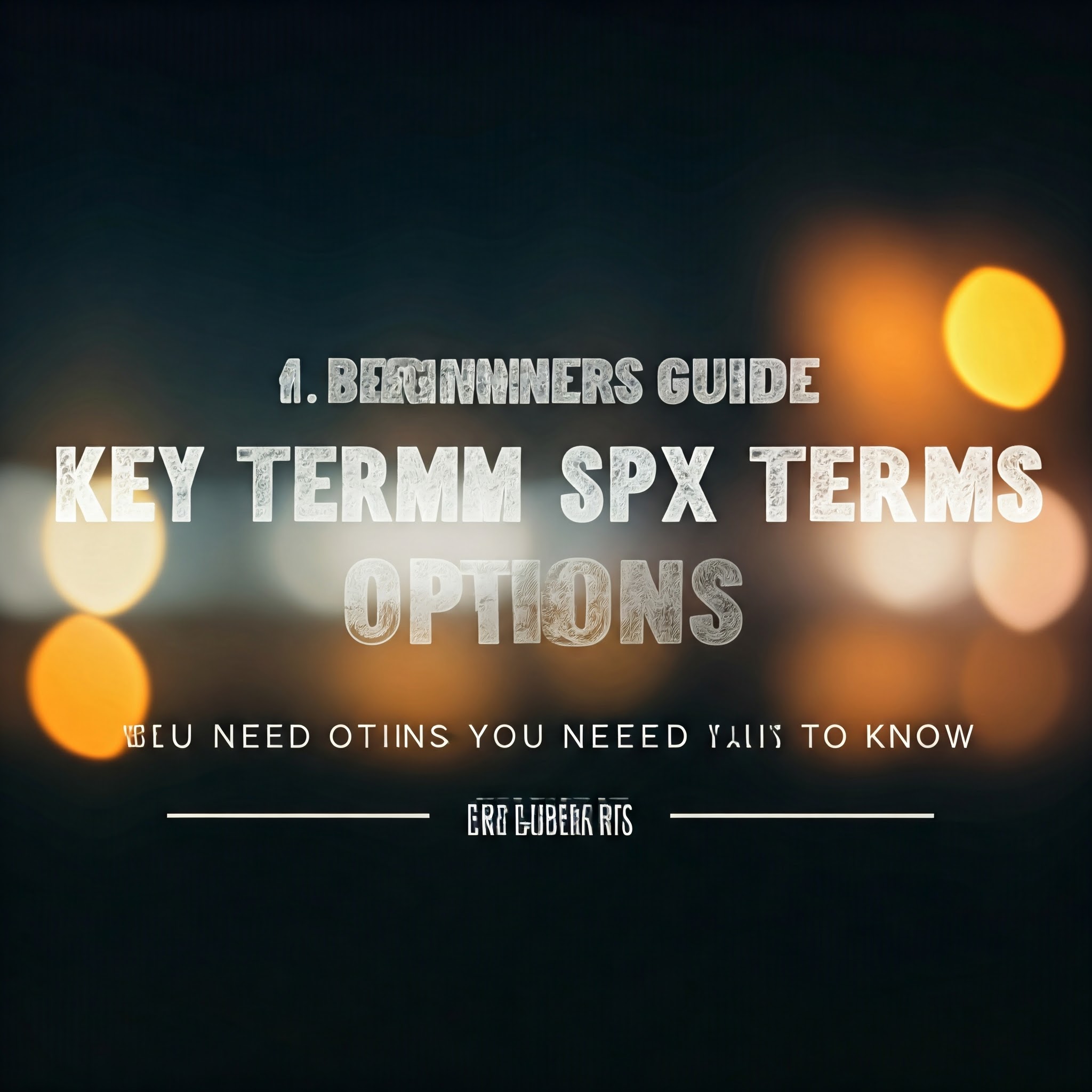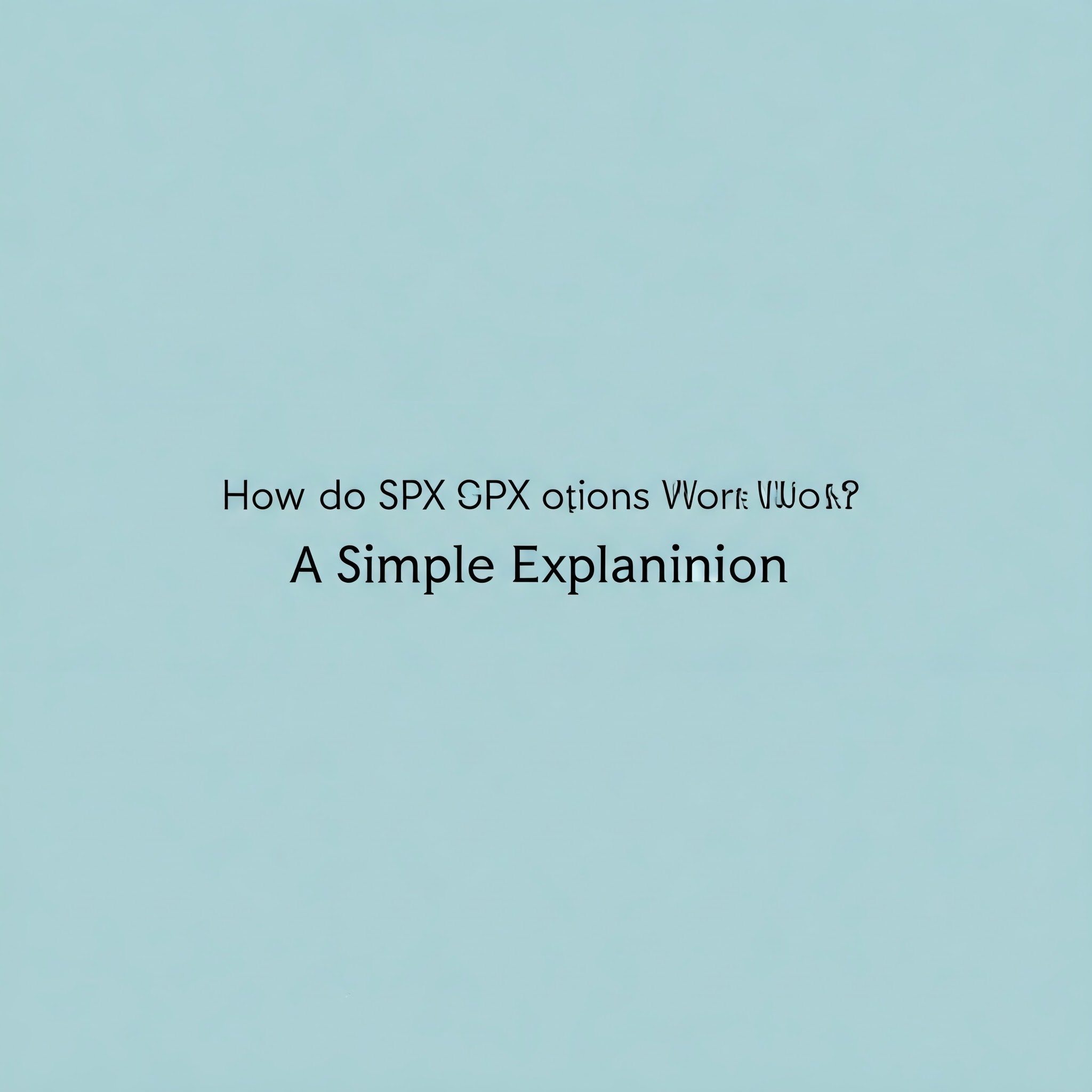Introduction
SPX options, based on the S&P 500 Index, are a popular financial instrument for traders and investors. However, to navigate the world of SPX options effectively, it’s essential to understand the key terms and concepts associated with them. Whether you’re a beginner or looking to refresh your knowledge, this guide will introduce you to the fundamental terms you need to know to trade SPX options confidently.
1. SPX Options
SPX options are financial derivatives based on the S&P 500 Index, a benchmark index representing the performance of 500 of the largest U.S. companies. These options are cash-settled and European-style, meaning they can only be exercised at expiration.
2. S&P 500 Index
The S&P 500 Index is a market-capitalization-weighted index that tracks the performance of 500 large-cap U.S. companies. It is one of the most widely followed indices in the world and serves as the underlying asset for SPX options.
3. Call Option
A call option gives the buyer the right, but not the obligation, to buy the S&P 500 Index at a specific price (strike price) before the expiration date. Traders buy call options when they expect the index to rise.
4. Put Option
A put option gives the buyer the right, but not the obligation, to sell the S&P 500 Index at a specific price before the expiration date. Traders buy put options when they expect the index to fall.
5. Strike Price
The strike price is the price at which the buyer of an option can buy (in the case of a call) or sell (in the case of a put) the underlying S&P 500 Index. It is a fixed price determined at the time the option is purchased.
6. Premium
The premium is the price paid by the buyer to the seller (writer) of an option. It represents the cost of purchasing the option and is influenced by factors such as the underlying index price, strike price, time to expiration, and volatility.
7. Expiration Date
The expiration date is the date on which an option contract becomes invalid. For SPX options, which are European-style, the option can only be exercised on the expiration date.
8. European-Style Options
European-style options can only be exercised at expiration, not before. SPX options are European-style, which reduces the risk of early assignment for option sellers.
9. Cash Settlement
SPX options are cash-settled, meaning no physical delivery of the underlying asset occurs. Instead, the profit or loss is settled in cash based on the difference between the index price and the strike price.
10. Intrinsic Value
The intrinsic value of an option is the difference between the underlying index price and the strike price. For a call option, it is the amount by which the index price exceeds the strike price. For a put option, it is the amount by which the strike price exceeds the index price.
11. Time Value
The time value of an option is the portion of the premium that reflects the time remaining until expiration. It decreases as the option approaches expiration, a phenomenon known as time decay.
12. Implied Volatility (IV)
Implied volatility is a measure of the market’s expectation of future price fluctuations in the S&P 500 Index. It is a key factor in determining the premium of an option. Higher implied volatility leads to higher premiums.
13. Greeks
The Greeks are measures that describe the sensitivity of an option’s price to various factors. Key Greeks include:
- Delta: Measures the sensitivity of the option’s price to changes in the underlying index price.
- Gamma: Measures the rate of change of delta.
- Theta: Measures the sensitivity of the option’s price to the passage of time (time decay).
- Vega: Measures the sensitivity of the option’s price to changes in implied volatility.
14. Open Interest
Open interest is the total number of outstanding option contracts that have not been settled or closed. It is an indicator of the liquidity and activity level of a particular option.
15. Volume
Volume refers to the number of option contracts traded during a specific period. High volume indicates active trading and better liquidity.
16. In-the-Money (ITM)
An option is in-the-money if it has intrinsic value. For a call option, this means the index price is above the strike price. For a put option, it means the index price is below the strike price.
17. Out-of-the-Money (OTM)
An option is out-of-the-money if it has no intrinsic value. For a call option, this means the index price is below the strike price. For a put option, it means the index price is above the strike price.
18. At-the-Money (ATM)
An option is at-the-money if the index price is equal to or very close to the strike price.
19. Assignment
Assignment occurs when the seller (writer) of an option is obligated to fulfill the terms of the contract. For SPX options, assignment only happens at expiration due to their European-style nature.
20. Liquidity
Liquidity refers to the ease with which an option can be bought or sold without significantly affecting its price. SPX options are highly liquid due to the popularity of the S&P 500 Index.
21. Bid-Ask Spread
The bid-ask spread is the difference between the highest price a buyer is willing to pay (bid) and the lowest price a seller is willing to accept (ask). A narrow spread indicates high liquidity.
22. Leverage
Leverage refers to the ability to control a large position with a relatively small investment. Options provide leverage, as they allow traders to gain exposure to the S&P 500 Index with a fraction of the cost of buying the index outright.
23. Hedging
Hedging involves using options to reduce the risk of adverse price movements in an existing portfolio. For example, buying put options can protect against a decline in the S&P 500 Index.
24. Speculation
Speculation involves taking on risk in the hope of achieving a profit. Traders use SPX options to speculate on the future direction of the S&P 500 Index.
25. Section 1256 Contract
SPX options are classified as Section 1256 contracts under the U.S. tax code, which means they are eligible for favorable tax treatment. Gains are taxed as 60% long-term and 40% short-term capital gains, regardless of the holding period.
Conclusion
Understanding these key terms is essential for anyone looking to trade SPX options. Whether you’re a beginner or an experienced trader, having a solid grasp of these concepts will help you make informed decisions and navigate the complexities of options trading.
As you continue your journey in SPX options trading, refer back to this guide to reinforce your understanding of these fundamental terms. With practice and experience, you’ll become more confident in your ability to analyze and trade SPX options effectively.
What Are SPX Options? A Comprehensive Guide for Beginners
How to Start Trading SPX Options: A Step-by-Step Guide
The Difference Between SPX Options and Other Options A Detailed Comparison




